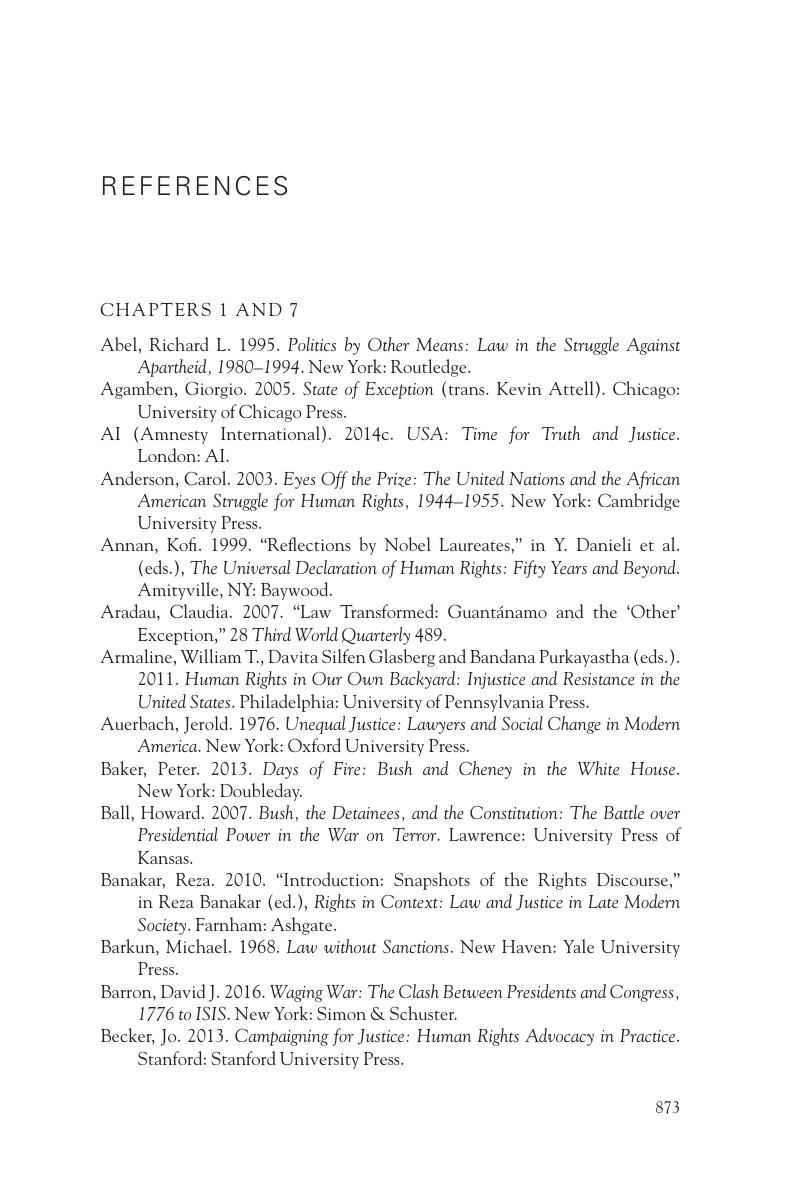Book contents
- Law’s Wars
- Cambridge Studies in Law and Society
- Law’s Wars
- Copyright page
- Contents
- Tables
- Foreword
- Foreword
- Preface
- Abbreviations
- Chapter One Defending the Rule of Law
- Chapter Two Abu Ghraib
- Chapter Three Guantánamo Bay
- Chapter Four Interrogation
- Chapter Five Electronic Surveillance
- Chapter Six Ius in Bello
- Chapter Seven The Resilience of the Rule of Law
- Appendix: Tables
- Notes
- References
- Index
- Cambridge Studies in Law and Society
- References
References
Published online by Cambridge University Press: 23 August 2018
- Law’s Wars
- Cambridge Studies in Law and Society
- Law’s Wars
- Copyright page
- Contents
- Tables
- Foreword
- Foreword
- Preface
- Abbreviations
- Chapter One Defending the Rule of Law
- Chapter Two Abu Ghraib
- Chapter Three Guantánamo Bay
- Chapter Four Interrogation
- Chapter Five Electronic Surveillance
- Chapter Six Ius in Bello
- Chapter Seven The Resilience of the Rule of Law
- Appendix: Tables
- Notes
- References
- Index
- Cambridge Studies in Law and Society
- References
Summary

- Type
- Chapter
- Information
- Law's WarsThe Fate of the Rule of Law in the US 'War on Terror', pp. 873 - 898Publisher: Cambridge University PressPrint publication year: 2018

